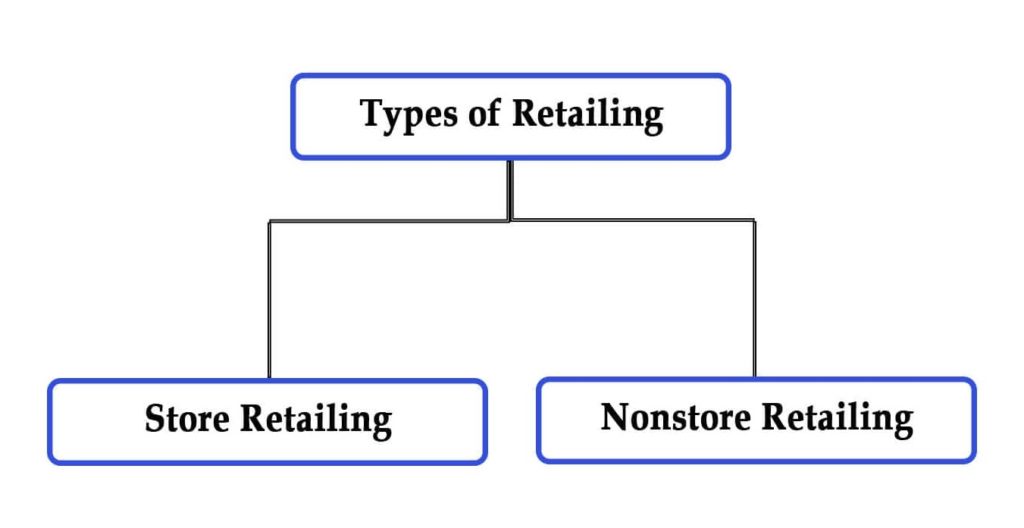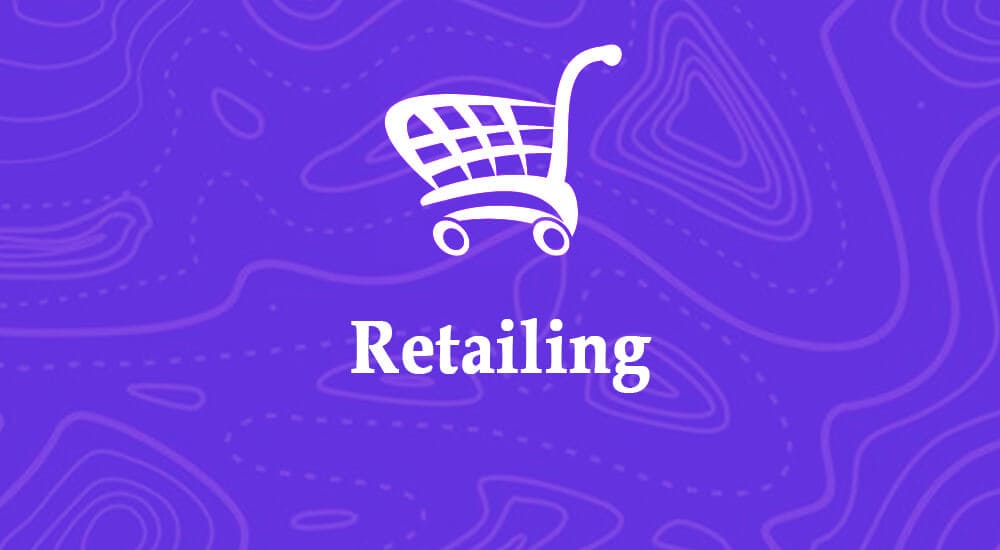Definition: Retailing is a distribution process involving all activities related to selling goods and services to the consumer.
One business selling to another is not retailing. A business entity must sell products or services to the end-user for the transactions to qualify.
A retailer can be any organization or a shop owner who sells to consumers. They don’t manufacture goods; they buy from distributors or manufacture in large quantities and distribute to consumers in smaller quantities.
A retail transaction is different from a wholesale business, where large quantities are bought. Also, wholesale is a transaction between businesses, while retailing is business to consumer.
Types of Retailing

Retailing can be of two types:
- Store Retailing
- Non-Store Retailing
Store Retailing
This is the most common form, where consumers visit stores or shops and purchase the product.
Store retailing can be classified into:
- Amount of Service Retailing
- Product Line Retailing
- Relative Price Emphasis Retailing
- Control of Outlets Retailing
Amount of Service: This type is classified based on the level of service customers receive, such as self-service, limited service, or full service.
Product Line Retailing: Here, businesses are grouped based on what the store sells. This can be a superstore, specialty store, supermarket, hypermarket, convenience store, departmental store.
Relative Price Emphasis Retailing: These retailers are known for their low prices. Examples of this type are discount retailers, catalog stores, off-price retailers.
Control of Outlets Retailing: These are independent outlets like voluntary chains, retailer cooperatives, corporate chains, and franchise organizations.
Non-Store Retailing
In non-store retailing, purchase transactions occur outside the premises. It can further be classified into:
- Direct Marketing
- Direct Selling
- Automatic Vending
Direct Marketing: These businesses advertise right to customers with email marketing, TV ads, social media ads, and other online ads.
Direct marketing is on boom these days due to the global pandemic. Consumers are getting information through marketing, and that is affecting their purchase patterns. Direct marketing has no competition as marketers can directly reach the audience’s inbox.
Direct Selling: These businesses send their agents door to door to give a demo of the product and take orders. However, due to advancements in direct marketing and online purchasing, this form of retailing is no longer common.
Automatic Vending: These machines are kept in offices, malls, airports, and other public places. Consumers can insert paper money or coins and get the product. The whole process is automatic.
This retailing is very common in developed countries and provides easy access to consumers. Consumers can buy drinks, snacks, candies, newspapers, and much more with vending machines.
Summary
Retailing is the last link in the chain between the product and the user. Retailing patterns have changed a lot in the previous decade. Once it was mainly direct or store purchases, but now consumers are buying online. A retailer needs to use all forms to stay in business.
